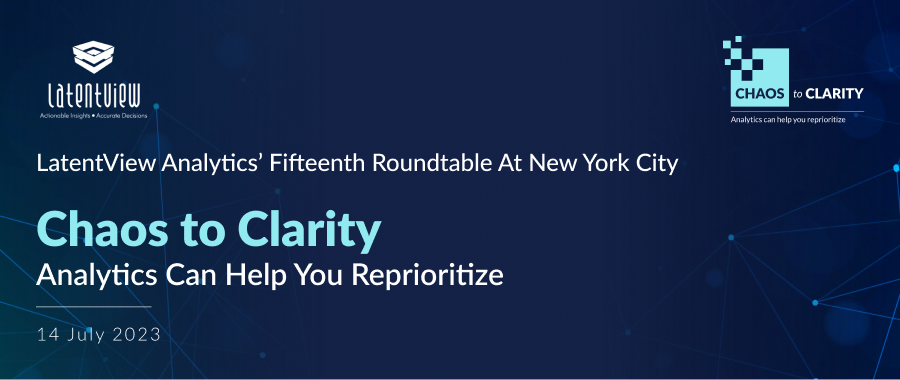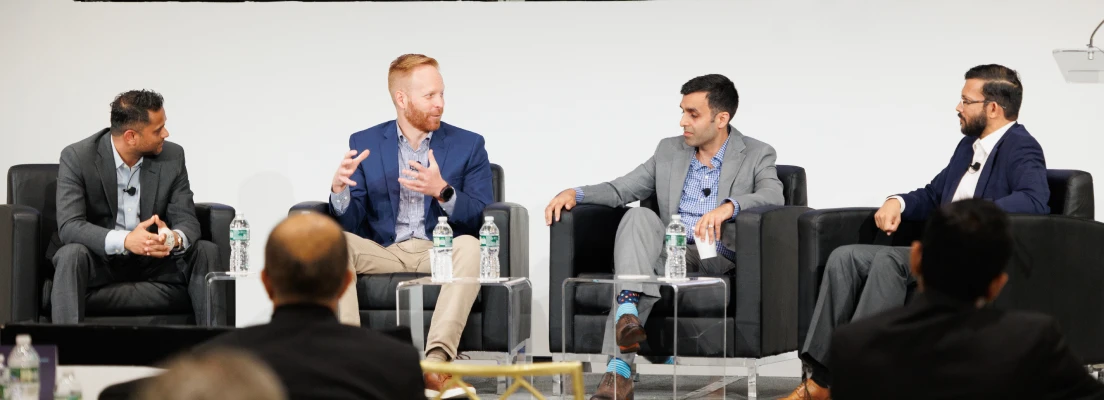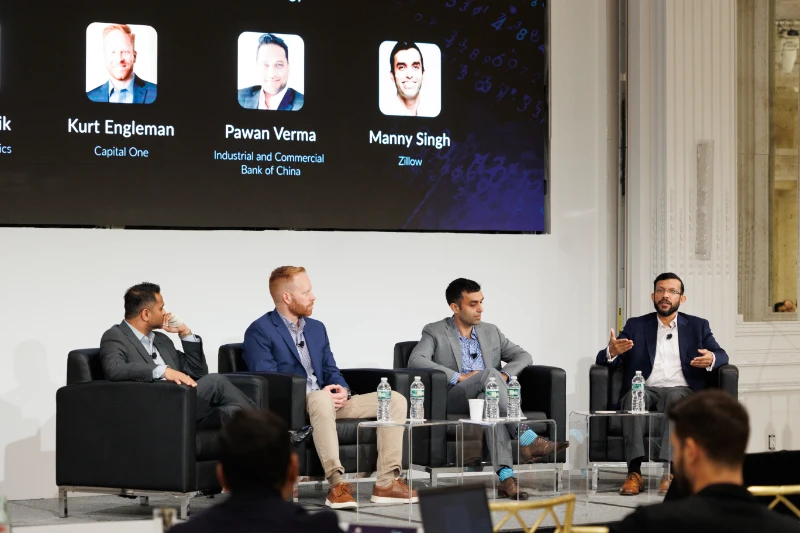

Are your organizational priorities on track, or is it time to pause, review and re-align?
Welcome Note
Krishnan Venkata, LatentView Analytics
The world looks different since the LatentView network last gathered in February. The New York Times had boldly pronounced the Great Resignation dead and Generative AI continues to penetrate all industries and verticals, leaving business leaders wondering: What’s next?
Enter the Age of Reprioritization. Digital transformation for digital transformation’s sake is no longer an option for organizations who are renegotiating budgets while Wall Street buckles down for a stormy economy. Strategic, analytics-backed, reprioritization with an emphasis on creating value—the theme of the event—should be the top priority for C-suites and boardrooms as we round out 2023. What’s at the center of all this reprioritizaion? The customer.
The customer, and the data that surrounds each individual, will guide organizations toward a central goal. Oftentimes, this mission includes doing more with less. But such a feat requires buy-in from every stakeholder, in earnest. LatentView is focused on providing departments across the business with the right customer-centric data to map a profitable future while being mindful of budgets and the external threats that challenge global commerce today.
Keynote Address
Chaos to Clarity: Analytics can help you reprioritize
Murli Buluswar, Citibank

There’s no shortage of AI/ML hype—one that could be considered a bubble (and one that’s potentially popped). The hype cycle continues, though, as enterprises scramble to leverage Generative AI to accelerate product innovation. However, companies must be careful not to chase this shiny new object without considering the bigger picture. Failure to view AI of any kind as a tool—a means to an end—is what prevents data leaders from gaining a coveted seat at the C-suite table alongside CIOs and other colleagues.
Why is this? Why do data and analytics leaders often play second fiddle to other executives in their organizations? It’s for several reasons according to Murli Buluswar, Head of Analytics at Citibank.
First, is falling into the trap of taking a reactive tactical approach to data and analytics. This pigeonholes data leaders as experts in “rearview mirror” intelligence when what is also needed are new ways to shape the future. Second, they walk on a “bridge to nowhere.” So much time is spent on perfecting data engineering and developing AI algorithms but with no promise of tangible outcomes. The third is FOMO. First came crypto. Then the metaverse. Now GAI.
Here are 3 ways to start:
- Ask yourself why is this initiative important. It’s not just about faster data-driven insights. You need to go wider and deeper with an eye on how insights drive a material financial outcome for your organization.
- Revisit your core values and principles as an organization. This is more about just a mission statement that’s framed on the wall. You must bake your company’s core values into every data analytics initiative from the start.
- Stop thinking about analytics as an abstract concept floating in the ether. Analytics It’s not just a service. Think of it as a “product” that is consumed and embedded in all decision-making.
During this time of rapid transformation, data analytics leaders must act as a force for change in their organizations, or change will happen to them. It starts with fostering a culture of curiosity. Curiosity leads to data, which leads to insights, which leads to strategy, which cycles back to more curiosity. Culture is key to unlocking curiosity and moving data leaders from mere tacticians to people that can actually change their companies and even the world – it’s all up to you to step up and earn that mantle.
Panel discussion
Moneyball your business
Rethink resource & budget allocation through analytics
Moderator
Kaushik Boruah
Speaker
Sanjay Singh
Speaker
Erica Klampfl
Ford Motor Company

Post-pandemic, some industries are better positioned than others. In CPG, by and large, organizations have been disciplined with their pricing, which has led to margins that are equal to or better than pre-pandemic levels. But in retail or automotive, for example, excess inventory, slow cloud adoption, and rapidly changing technology have left those industries scrambling to regain what they lost in 2020 and 2021. But they are doing so with more data, risk management experience and a renewed perspective on what is most important to the organization.
Erika Klampfl says Ford applied many pandemic-era learnings to today’s challenges. During the height of the health crisis, as global manufacturing screeched to a halt, Ford leaned on real-time scenario planning to predict supply chain breakdowns. They overlaid epidemiological maps on supplier planning to predict labor shortages and re-allocate its workforce—all in real-time. Today, they are using similar data to anticipate where supply chain breakdowns will disrupt semiconductor production—informing the company which vehicles should be built to maximize profitability amid the chip shortage.
Though undoubtedly successful, the resources that power these analytics are limited. Both Klampfl and former Procter & Gamble data expert Sanjay Singh agree that the organization-wide sentiment when it comes to data and analytics is “do more with less.” With only 2,000 data and analytics personnel on staff, how does one prioritize who gets data and analytics across different areas of the business with different goals? Is it important to drive revenue or fix a quality problem that directly impacts customer experience?
The overarching question in these and all industries is how organizations better prepare for the next crisis. Singh recommends CPG & Retail companies lean on emerging technologies to closely align the short and long-term strategies with the customer journey. For example, the data in the beauty sector tells us that if a customer makes a repeat purchase in the first 30 days, there is a 90% chance they will convert to a long-term customer. However, a customer purchasing a TV on Black Friday is unlikely to buy another TV in the near term.
Despite the stark contrast between their industries, Singh and Klampfl agree that aligning on the most immediate priorities will inform their resource allocation strategy. In a pinch, they look to the CEO to bring clarity to what is most important to the business. The future is functional data, not analytics for analytics sake.
Panel discussion
Numbers to narratives
Measuring the success of your reprioritization strategy
Speaker
Pawan Verma
Speaker
Kurt Engleman
Speaker
Manny Singh
Moderator
Shiraz Ritwik

In 2023, we know that the most resilient and agile players prevail. Beyond the ability to fail (relatively) fast and regroup, an enterprise’s greatest strength lies in its ability to anticipate customer needs, buying patterns, infrastructure challenges, and more. All of this is rooted in data and equates directly to an organization’s financial success. In fact, according to Mckinsey, in 2020 and 2021, resilient companies generated shareholder returns that were 50 percent higher than those of less resilient peers.
Most organizations have more data than they know what to do with. Lack of data is not the problem. While companies are rapidly adopting solutions to access, store and analyze their data, the real value lies in the ability to transform all the numbers into a cohesive and relevant narrative. Narratives are essentially stories—and companies need to learn how to use data to tell compelling stories to both internal and external audiences.
The most timeless and memorable stories are ones that address the deepest cares and concerns of the audience. Pawan Verma from the Industrial and Commercial Bank of China believes the most important stories data leaders can tell are ones that align with what business leaders care about. They don’t care about the newest AI fad. What they DO care about can be boiled down to four things: reducing risk, optimizing costs, driving revenue and focusing on what customers want and need.
All good stories have both short and long-term lessons often tied to risk. They allow you to reflect on decisions you may make tomorrow that may impact your life many years from now. Manny Singh from Zillow believes taking numbers to narratives hinges on managing short vs. long-term decisions. Yes, you need to address the here and now to keep the lights on. However, you also need to make decisions that position you to be ahead when the environment changes and the cycle turns (and it always does).
The greatest novels, films, and plays in the world are largely about managing risk. A protagonist on a journey toward a goal must balance that objective while mitigating risk. What is the character willing to risk to survive during war, summit a mountain, or win over a love interest? And how do they avoid getting hurt physically or mentally in the process? Kurt Engleman from Capital One believes that risk is usually fairly constant.
Splashy headlines or dramatic movies often control the narrative around risk – especially in finance. However, risk management doesn’t inherently change based on the news. Companies simply need to take a consistent and measured approach to align their corporate strategy with risk strategy. In the end, when it comes to risk management, moving from numbers to narratives (like any good story) is about optimizing for the good while protecting against the bad.
Fireside Chat
Disrupt or be disrupted
How CMOs are navigating the changing business landscape
Moderator
Annu Baral
Speaker
Jai Kibe
Speaker
Richard Kestenbaum

The CMO is arguably the C-suite role that’s undergone the most dramatic change over the past decade. Rapid shifts in consumer behavior have totally redefined the marketing function—from one-way promotions to two-way customer dialogue to an influencer-dominated creator economy.
At the center of that change is the evolving customer and their demand for unique, personalized brand experiences. Further, they want to support equitable brands doing good in the world—adding yet another layer to the CMO’s role.
Richard Kestenbaum, Triangle Capital partner and Forbes contributor believes the challenge legacy brands have in meeting the customer where they are by noting the difference between Boomer and Gen-Z buyers. “Boomers look at a product and ask ‘does it fit, is it priced right, and do I like it?’” Kestenbaum said. “But Gen-Z looks at a product and wants to know where it is sourced and what the CEO’s political beliefs are.”
The bottom line is clear: every customer wants to feel valued. Former Coca-Cola CMO Jai Kibe, distills 2023 consumer priorities into the following buckets.
Consumers want brands to:
- Treat them like a human, understand their profile and remember their interactions.
- Respond quickly.
- Create seamless on and offline experiences under a single cohesive brand.
- Address their concerns in a timely manner.
- Respect their privacy. If they give their sensitive information, they expect value in return.
To make this happen, CMOs need to act as the voice of the customer inside the organization—advocating for their needs and building brand trust. They should have a clear, disciplined content strategy and employ the power of AI and automation to create and disseminate content at scale.
Kibe offers a final point about relating to the consumer. He says “It’s never been easier to reach people, but it’s never been harder to connect with people. Marketing should be at the core of the organization and evident in every customer interaction—from product design to buying experience. True, enduring brands transcend malls and marketplaces and capitalize on micro-moments. They do not interrupt but rather integrate seamlessly into the consumer’s lived experience.”
Our Past Events

Indirect Taxes: The Expense You Never Budget For
A new financial year begins, and with the Union government’s Budget rules for FY25-26 of ample tax exemption, you would expect more money in your

The Role of Data Analytics in Modern Financial Services
The Role of Data Analytics in Modern Financial Services Introduction Need for data analytics Functions Types Growth Strategy AI, Big Data & Blockchain Trends Challenges

Generative AI in Healthcare: How it’s Reshaping the Industry
Generative AI in Healthcare: How it’s Reshaping the Industry Generative AI in Healthcare Gen AI’s Impact Real-world Applications Key Challenges in Implementation Future Outlook About








